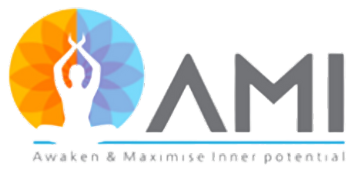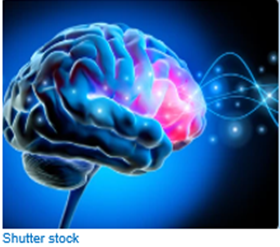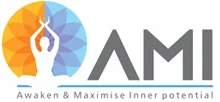Authors: Shyamala Salian, Megha Dhargalkar.
Meditations: Usha Karnik, Sushma Dhirwani.
Asana Photos: Alpa Mehta
The world is in a state of constant, complex unpredictable changes, mostly contributed by the rapid advances in technology. It has changed the way we live, operate, and our social interactions. Technology is not going away, and the use of devices is on the increase across all ages. This will impact health trajectories which are patterns of how a person’s health changes as they get older.
With the body enduring hours in forward flexion, collapsed, compressed and being sedentary, growing research on the health implications is proving alarming.

We now encounter new syndromes like trigger thumb, text neck, cubital tunnel, dry eyes etc. Also, easy access to the internet, reduces dependence on our own cognitive resources with consequences of issues like Brain fog.
Potential outcomes of a digitally skewed lifestyle impacting your health trajectory can be-
- The Brain requires more oxygen than any other organ. The position of the head jutting both down and forward diminishes blood flow and hence oxygen to the brain, thus speeding up the aging process, impacting your health trajectory.
- Symptoms of digital eyestrain due to extended usage of devices can include blurred vision and dry eyes. The “blue light” that your smartphone & computer screens give off affects melatonin levels, impacting your sleep.
- Long term use of Ear-pods can cause noise induced hearing loss and tinnitus (ringing in the ears). The sensitive hair cells in your inner ear never grow back once they have been damaged.
- Prolonged periods in a slumped, overly flexed position results in the vital organs working harder, than if the spine was in its natural anatomical position. One outcome is stress due to activation of the sympathetic nervous system (SNS) caused by restricted breathing. Stress negatively impacts your health trajectory.
- Slumping also results in compromising the integrity of the spine causing cervical & /or lumbar spondylosis, resulting in poor posture and difficulty standing straight.
- Slumped shoulder position also restricts blood flow to your hands. Increase incidences of carpal (hands and fingers) or cubital tunnel (forearm and elbow) pain and stiffness.
- Sedentary behavior is a common problem and a major contributor to restricted hip extension flexibility. Tight hip flexors can lead to pain in the lumbar spine.
- Another complication can be DVT (Deep vein Thrombosis) a medical condition when a blood clot forms in a deep vein usually in the legs and which can be fatal.
Overview:
Yoga is an affordable and safe option to positively enhance your health trajectory by:
- Practices like Anulom Vilom (alternate nostril breathing) and Brahmari Pranayama (inhale through the nose and exhale through the mouth with a humming sound like a bee) helps generate a good supply of oxygen in the body, mainly the brain. These practices also increase lung capacity and induce deep relaxation.
- Your brain produces five different kinds of brain waves, each of which operates at a different frequency / activity. Gamma (peak concentration); beta (peak physical, active thinking); alpha (deep relaxation) ; theta (light sleep) and delta (restorative sleep) respectively.
Practices such as meditation – Visualization and Pranadharana (counting of breaths) and Yoga nidra (psychic sleep) enhance Alpha brain waves. Benefits of Alpha brain waves are improved memory, intelligence, creativity, and alertness. Alpha waves also act as a natural anti- depressant by promoting the release of the neurotransmitter serotonin.
What if there is a way to get at the source of our emotions and thoughts – the brain, so you could achieve your desired physical and mental state, improving your health trajectory?
Try our AMI yoga practices from the links below, we would be interested on your feedback:
Visualization meditation: – https://learn.amiyogaglobal.com/courses/guided-meditation-and-yoga-nidra/contents/61dfe2dbb7935
Prana dharana meditation :- https://learn.amiyogaglobal.com/courses/guided-meditation-and-yoga-nidra/contents/615a9a2f1dfcc
Yoga Nidra:- https://learn.amiyogaglobal.com/courses/guided-meditation-and-yoga-nidra/contents/615a9a5310803
- Want to improve your co-ordination, cognitive abilities & memory? Try the neuro – yoga practices from AMI yoga . https://learn.amiyogaglobal.com/courses/neuro-yoga
- Dip your open eyes in cool water for a little while. Blinking the eyes keeps them from developing dryness (Chakshu Dhauti). Other eye relaxation exercises are to slowly move the eyeballs up/down/diagonally and palming. Practice eye practices without your glasses.

Insert index fingers into the ears and rotate them (Karna Dhauti) to improve hearing. Another practice is to gently pull the ear pinna, starting downwards to upwards and back. Repeat a few times.
- Pranayama practices like yogic breathing engage the parasympathetic nervous system (PNS) which enables slowing the heart rate, speeding digestion and activating the cleansing processes of the body. Important factors to counteract the effects of stress which affects your health trajectory.
- You will build muscle with asanas (poses) such as Santolanasan (plank pose), and Utkatasan (chair pose) which use the weight of the body. Numerous studies have shown that yoga is effective at improving muscle strength and balance. Improved posture is one of the many benefits of a yoga practice.
- Sukshma Vyayam are gentle but effective practices to improve blood circulation, joint flexibility and muscle strength. Repeat each practice below for 8-10 times.
- Legs (seated on a mat): Curl and flex the toes (Padanguli Naman); moving the feet backward and forward at the ankles (Goolf Naman); ankle rotation (Goolf Chakra);
- Kneecap contractions – Contract the muscle surrounding the knees while drawing the kneecap towards the thigh (Janufalak akarshan). Butterfly pose for hip joints – join both soles of the feet and flap the knees up and down (Poorna titali asan).
- Upper body (seated on a chair or mat): Clenching the palms (Mushtika Bandhan); wrist bending (Manibandha Naman). Clockwise and anticlockwise wrist rotation (Manibandha chakra). Bend the arms at the elbows and touch the fingers to the shoulders (Kehuni Naman). Hands on shoulders and rotate clockwise and anti- clockwise (Skanda Chakra).
- Practices like Shadanan Mudra, the 6 neck movements- turn the face upwards, downwards, sideways and lateral as in photo. It benefits the nerves connecting the muscles in your neck. Photo- Alpa Mehta

End your session with Shavasana (corpse pose) in complete relaxation lying on your mat. Relax the whole body and stop all physical movement. After some time make small movements and smoothly release the posture.
Periodic movement is a must, and you can even do the above Sukshma vyayam practices multiple times during the day.
Along these lines, the combination of the physical body, breath, and concentration while performing the postures and exercises unblocks the body’s energy Nadis (channels) that open up, and the entire body’s energy system reaches a balance. This will also positively impact your health trajectory.
Yoga being a preventive and curative approach aids in molecular rejuvenation of human health.
Smartphones and other new tech devices have no doubt made life simpler and allow you to stay connected. But there is no such thing as a free lunch. The price you ultimately pay may not be the one you really bargained for. Put your health first and integrate yoga into your lifestyle to enhance your health trajectory!
It is never too late to ramp up your health trajectory for the better. Studies have demonstrated that even 90-year-olds can improve their strength and power with regular yoga practices. Significant benefits can be accrued even from relatively ‘small doses’ of yoga!

To learn more, get in touch with us at https://www.amiyogaglobal.com
References
- https://journals.lww.com/nursingresearchonline/Fulltext/2011/05001/Health_and_Illness_Over_Time__The_Trajectory.2.aspx
- Mukhopadhyay et al: Impact of Yoga upon the DNA repair mechanism of the body Indian journal of traditional knowledge (March 2017)
- https://www.healthline.com/health/alpha-brain-waves#benefits
- https://www.yogasportscience.com/single-post/slumpasana
- https://www.nike.com/in/a/benefits-of-yoga
- https://www.mdpi.com/2071-1050/15/5/4264
- https://www.verywellmind.com/how-do-smartphones-affect-the-brain-2794892
- https://usa.kaspersky.com/resource-center/preemptive-safety/impacts-of-technology-on-health



